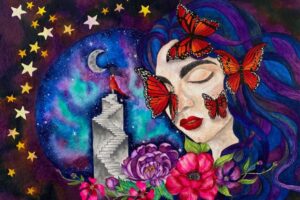Navigating the Digital Art Landscape: Tools and Software for Creativity

In the ever-expanding realm of digital art, navigating the landscape of tools and software is crucial for artists seeking to unleash their creative potential. The evolution of technology has given rise to a plethora of options, each offering unique features that cater to different aspects of the artistic process.
At the core of digital art creation is the graphic tablet, an essential tool that bridges the gap between traditional and digital mediums. Graphic tablets, coupled with styluses, provide artists with a tactile and pressure-sensitive surface, mimicking the feel of pen or brush on paper. Wacom, Huion, and XP-Pen are among the leading manufacturers offering a range of tablets catering to various skill levels and budgets.
Once armed with a graphic tablet, artists delve into the world of digital art software. Adobe Creative Cloud stands tall as a comprehensive suite, including Photoshop for image editing and illustration, Illustrator for vector graphics, and Adobe Fresco for digital painting. These industry-standard tools are revered for their versatility and compatibility, making them a staple for professionals and amateurs alike.
For those seeking an alternative, Corel Painter stands out as a dedicated digital painting software with an extensive brush library and natural media emulation. Its emphasis on replicating traditional art tools and textures appeals to artists aiming to capture the organic feel of traditional painting in a digital environment.
The realm of vector graphics finds its champion in software like Adobe Illustrator and Inkscape. Vector-based art is scalable without loss of quality, making it ideal for logo design, illustrations, and other projects requiring precision. Inkscape, being open-source, provides a cost-effective option without compromising on functionality.
Sculpting and 3D modeling enthusiasts find solace in software like ZBrush and Blender. ZBrush offers an intuitive interface for digital sculpting, allowing artists to mold intricate 3D models with ease. Blender, an open-source 3D creation suite, caters to a broader audience, supporting not only 3D modeling but also animation, rendering, and more.
The emergence of tablet-based apps has further diversified the digital art landscape. Procreate, available exclusively on iPad, has gained immense popularity for its user-friendly interface and powerful features. It is a go-to choice for artists on the go, offering a seamless blend of performance and portability.
As virtual reality (VR) gains momentum, Tilt Brush and Medium by Adobe have ushered in a new era of immersive digital art creation. These VR tools enable artists to step inside their creations, sculpting and painting in three-dimensional space.
In conclusion, navigating the digital art landscape involves selecting the right tools and software to match one’s creative vision. Whether opting for industry-standard software like Adobe Creative Cloud, exploring alternatives like Corel Painter, or embracing the innovative possibilities of VR tools, artists today have an unprecedented array of options to bring their digital creations to life. As technology advances, the digital art landscape will undoubtedly continue to evolve, providing artists with even more tools and opportunities for creative expression.

